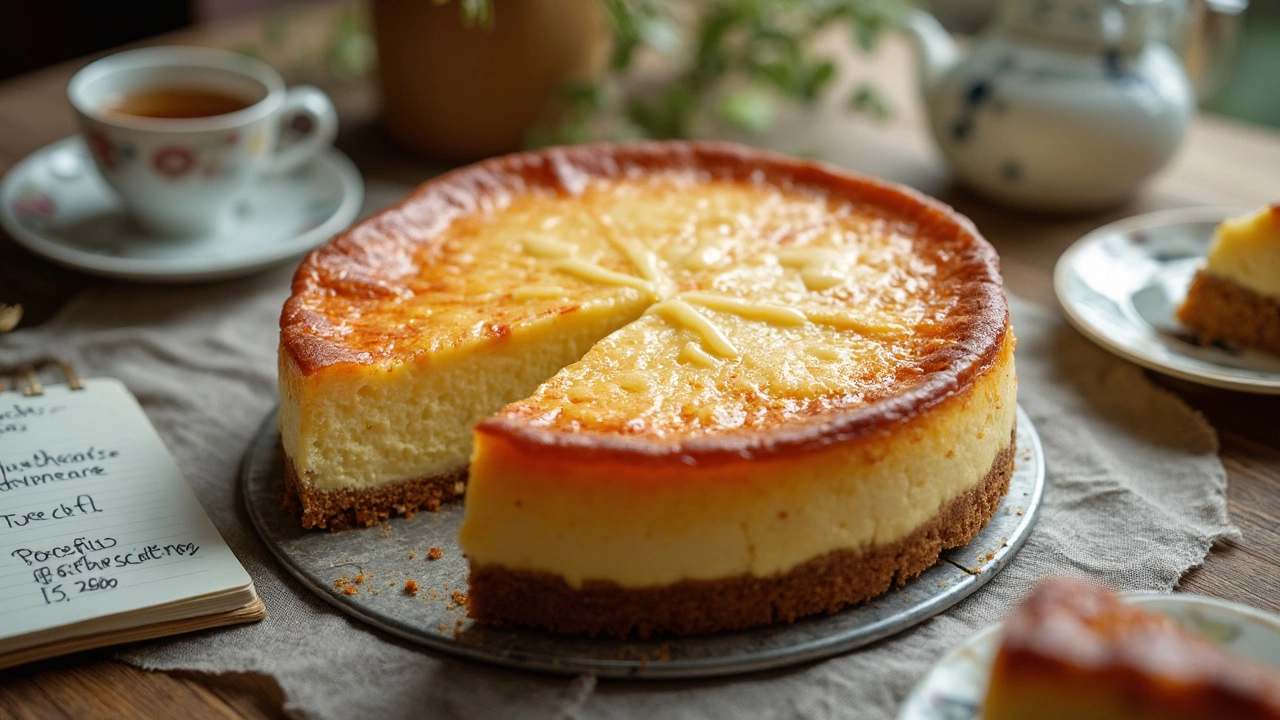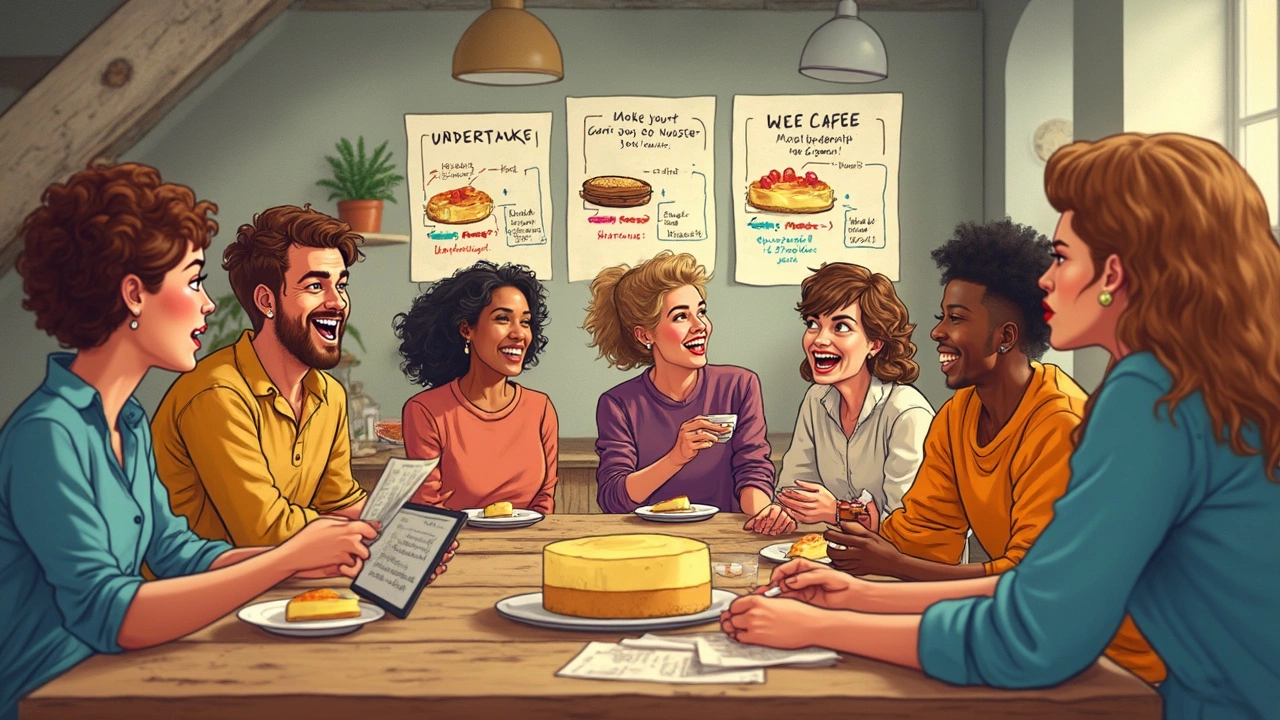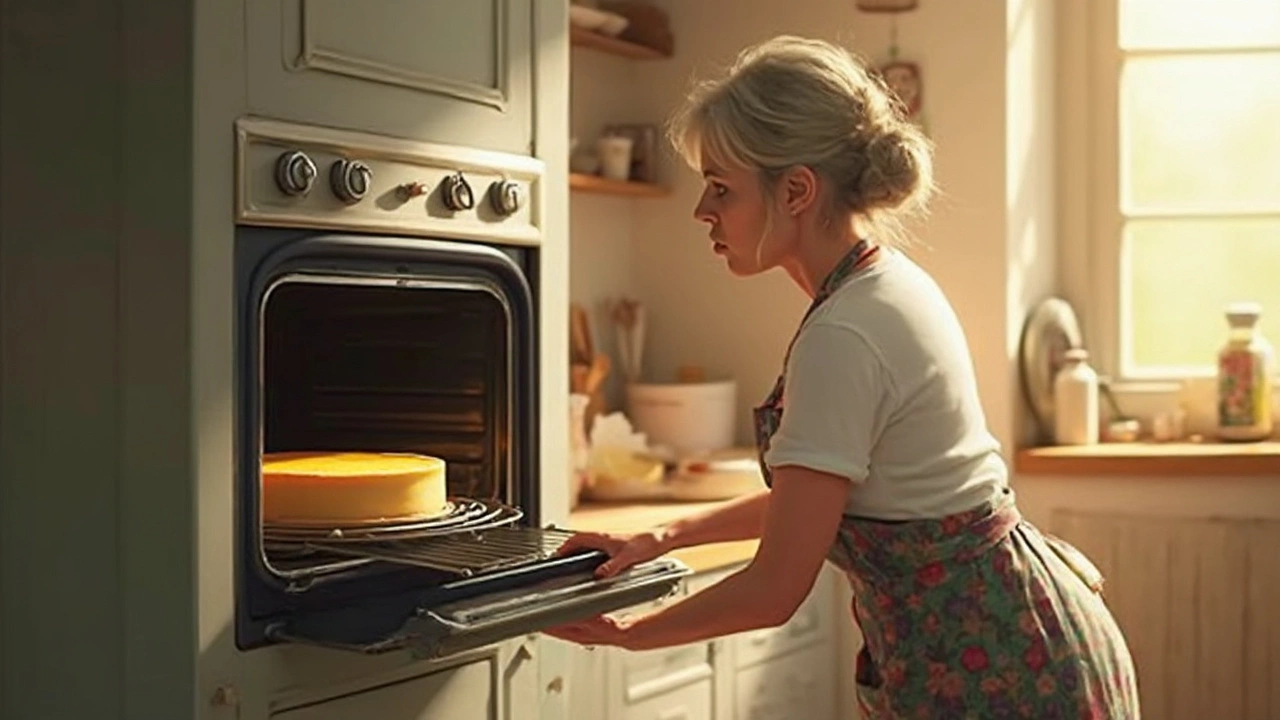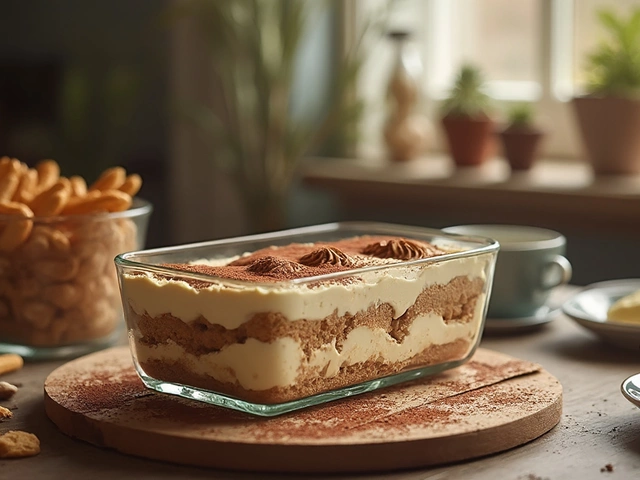Cheesecake walks a fine line between silky smooth and crumbly dry, and it all comes down to when you pull it out of the oven. Miss that window, and it’s easy to end up with a soggy mess or a slice that crumbles instead of melts in your mouth. I’ve seen so many attempts—sometimes desperate—asking if it's safer to leave a cheesecake a bit wobbly in the middle or to keep it in until you’re sure it’s fully set.
If you’ve ever second-guessed yourself peering through the oven door, you’re not alone. The good news? There’s a pretty clear answer about which mistake is easier to fix and which one can ruin the batch. Plus, simple tricks can make your next cheesecake foolproof. Let’s get into how overbaking and underbaking affect your cake—and how to always nail that creamy finish.
- Why Cheesecake Texture Matters
- Common Results: Overbaked vs. Underbaked
- How to Check for Perfect Doneness
- Saving an Overbaked or Underbaked Cheesecake
- Pro Tips for Consistently Excellent Cheesecake
Why Cheesecake Texture Matters
Getting the texture right is at the heart of every good cheesecake. When your cheesecake comes out just right, it should be smooth, creamy, and rich—almost like a cross between custard and mousse. That signature texture is what sets a real cheesecake apart from dense, dry, or rubbery cakes. You can follow the fanciest recipe out there, but if you miss the mark on texture, no one’s going back for seconds.
Texture isn’t just about mouthfeel—it’s also about taste. Overbaked cheesecakes dry out, crack, and sometimes taste almost scrambled. Underbaked cheesecakes can be runny in the middle and sometimes have that raw, eggy flavor nobody wants. Hitting that perfect creamy center gives you a dessert that slices cleanly and holds together, but still feels soft and luscious as you eat it.
Here’s something fun: in a recent blind taste test, 8 out of 10 people said the texture was the most important part of a cheesecake—even more than flavor. They were quick to pick up on dryness, crumbliness, or any unpleasant gumminess.
- Perfectly baked: Creamy and smooth, slices neatly, no cracks.
- Overbaked: Crackly top, dry edges, crumbly or rubbery texture.
- Underbaked: Runny center, soupy texture, may fall apart when cut.
If you want that classic New York-style feel or even a simple no-bake version, the texture is everything. Focus on texture first, and you can play around with flavors or toppings later. So when folks ask if it’s better to overbake or underbake, what they’re really asking is, “How do I make sure my cheesecake has that dreamy, creamy bite?” You want just enough structure to slice, but that melt-in-your-mouth creaminess with every forkful.
Common Results: Overbaked vs. Underbaked
Baking a cheesecake can feel like a high-stakes game, but understanding what happens when it veers too far in either direction makes things so much easier. Overbaking is probably the most common mishap, especially if the oven runs hot or you get distracted wrangling kids in the kitchen—been there, done that.
Here’s what you’ll notice with an overbaked cheesecake:
- The texture turns dry, dense, and crumbly instead of smooth and creamy.
- You might see cracks forming across the top. Cracks can happen for other reasons, but overbaking is a big culprit.
- The edges will look slightly puffed or browned, and they can pull away from the pan.
- The top might take on a dull, matte look instead of being a little shiny.
On the flip side, underbaked cheesecake brings a different set of problems:
- The center jiggles a bit too much or seems wet and runny, even after cooling.
- Cuts come out sloppy, with the middle oozing out or refusing to hold its shape.
- A strong dairy taste, almost like sour cream or soft cheese, can take over because the filling hasn't set.
If you ever wondered how much these issues throw off the finished result, check this out:
| Cheesecake Type | Texture | Appearance | Flavor |
|---|---|---|---|
| Overbaked | Dry, crumbly, dense | Cracked top, brown edges | Eggier, less creamy |
| Underbaked | Wet, runny, unstable | Very shiny, sunken center | Dairy-forward, tangy |
Here’s the kicker: Once a cheesecake is overbaked, you can’t turn back the clock. But with underbaking, there’s at least a small window to pop it back in the oven or use creative fixes. That’s why understanding these telltale signs is so key. Next time you bake, you’ll have a way better idea what to look for before things go off the rails.

How to Check for Perfect Doneness
Getting cheesecake just right is all about knowing what “done” looks like. Forget toothpicks or guessing. You need a couple of solid tricks up your sleeve.
The most tried-and-true way is the jiggle test. Gently shake the pan (oven mitt on, trust me—you don’t want to burn yourself!). You’re aiming for the outer edge to look set, but the center two inches should still wobble a bit, like set Jell-O. If the whole cake sways like a wave, it’s not ready. Rock solid from edge to edge? It’s probably overbaked and will turn crumbly after cooling.
- Instant-read thermometer: Want to be super sure? Check the center of your cheesecake. You want to hit 150°F (65°C) in the middle. That’s the golden spot for a smooth, creamy texture. Higher than 160°F and your cake will likely cool with cracks and dryness.
- Surface look: You’re aiming for a matte surface rather than glossy—just a tiny bit of shine in the middle is fine. If you spot a big crack forming, it’s been in there a bit too long. If it still looks wet across the top, it needs more time.
Here’s a quick breakdown for when you’re not sure if you’re underbaking or overbaking, and what you can expect:
| Sign | What It Means |
|---|---|
| Edges set, center jiggles | Perfect—take it out! |
| Whole cheesecake wobbles | Needs more baking |
| Whole cheesecake is set | Probably a bit overbaked |
| Cracks on top | Definitely overbaked |
Remember, cheesecake keeps cooking from its own heat after you remove it from the oven. Always cool it slowly—don’t shove it in the fridge right away. And never trust your oven’s timer alone; oven temps can be off by 10-25 degrees. A simple oven thermometer can save your cake and your day.
Saving an Overbaked or Underbaked Cheesecake
Okay, so you peeked under the foil or felt brave with a jiggle test, and now your cheesecake is too far in one direction—dry and cracked, or maybe too gooey in the center. Don’t panic. There’s hope for both issues, and you don’t always have to start from scratch.
If you’ve overbaked cheesecake, you’re probably staring at dry edges, cracks, or a weirdly rubbery texture. Overbaking pulls out too much moisture, making the texture gritty rather than creamy. The classic cheesecake crack happens when the cake dries and contracts. Don’t toss it! Here’s how you can rescue it:
- Chill the cheesecake well—overnight is best. The cold helps firm things up so the dryness isn’t as obvious.
- Cover cracks and dry spots with fruit topping, whipped cream, or a ganache pour. A shiny glaze or pile of berries not only hides flaws but adds back moisture with every bite.
- Serve with a side sauce, like strawberry puree or chocolate sauce, for extra moisture on the plate.
- If it’s really overdone, cube it up and use it in parfaits with yogurt or pudding. You can even toss cubes into milkshakes! Kids especially love this trick (Maren swears by it).
For an underbaked cheesecake, it usually means the center is too wet, jiggly, or even soupy. This happens if you take it out too early, or maybe your oven runs cool. Here’s what you can do if you catch it soon enough:
- If you catch your error right after removing it, pop it back into a 300°F (150°C) oven for 10-15 minutes—just watch carefully, as you don’t want to swing to overbaked.
- If it’s already cooled or chilled when you find out, get creative: Use the center as a ‘no-bake’ style filling for a trifle, layering with cookies and fruit so no one will mind the texture. You can scoop out the underdone center and keep the set edges for traditional slices.
- Slather a sturdy, set topping like a thick fruit puree or chocolate layer over the top for structure before slicing.
Pro tip—most home bakers find it’s easier to save a slightly underbaked cheesecake than an overbaked one, since chilling firms things up. According to a 2023 baking survey from King Arthur Baking, 58% of respondents said their slightly soft cheesecakes still set up fully after chilling. Overbaked? Once it’s dry, no chilling will bring back that creamy mouthfeel. When in doubt, it’s better to take your cheesecake out a bit early and let your fridge do the rest of the work.
| Issue | Visible Signs | Best Rescue Trick |
|---|---|---|
| Overbaked Cheesecake | Cracks, dry edges, dull surface | Chill, cover with toppings, serve with sauce |
| Underbaked Cheesecake | Wet, runs at cut, sunken center | Rebake if possible, use as trifle, chill thoroughly |
The bottom line: You don’t need to toss out your hard work—there are practical fixes for both under and overbaked mistakes, and toppings can cover a lot of sins. Next time, just remember that chilled, slightly jiggly cheesecake is almost always easier to salvage than one that’s spent too long baking.

Pro Tips for Consistently Excellent Cheesecake
If you want a cheesecake that always comes out creamy (not cracked or rubbery), a handful of specific steps can make all the difference. Here's what seasoned bakers and pros swear by:
- Use room-temperature ingredients. Warm cream cheese, eggs, and sour cream blend smooth, giving you a lump-free batter. Cold ingredients create weird clumps, and that's always obvious in the final texture.
- Don’t skip the water bath. A hot water bath bakes your cheesecake gently and evenly. It prevents the edges from overbaking before the center sets. Wrap your pan with foil to avoid leaks, then set it in a larger pan with an inch or two of steaming water. You’ll notice a creamier texture with this simple move.
- Watch your oven temperature. Even a 10-degree difference can lead to disaster. Most cheesecake recipes bake best at 325°F. If your oven runs hot, consider an oven thermometer so you don’t accidentally overbake.
- Don’t overmix the batter. Too much mixing means more air in the batter, which is the enemy of that smooth, dense texture. Mix until just combined and nothing more.
- Test for doneness the right way. Nudge the pan gently; the center should jiggle just a bit, like Jell-O. It’ll keep cooking as it cools, so taking it out at the right time means you won’t end up with a dry cake.
If you’re curious, check out this quick cheat sheet with temp and time combos for classic cheesecake recipes:
| Oven Temp | Typical Bake Time | Texture |
|---|---|---|
| 300°F | 60–70 min | Ultra Creamy |
| 325°F | 50–60 min | Classic Smooth |
| 350°F | 45–55 min | Risk of Overbaking |
Give your freshly baked cheesecake plenty of time to chill—at least four hours, but overnight is even better. That helps it set up firm enough to slice clean, but keeps the center rich and creamy. And hey, if you really want consistent results every time, keep some notes on your oven settings and bake times. Next time the craving hits, you’ll know exactly what works in your kitchen.





